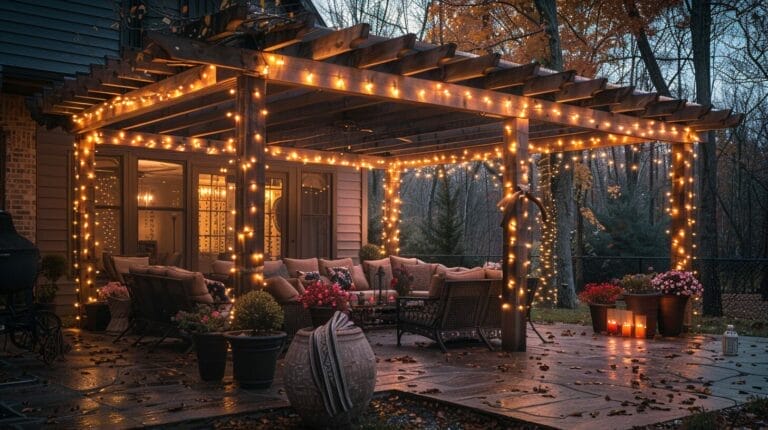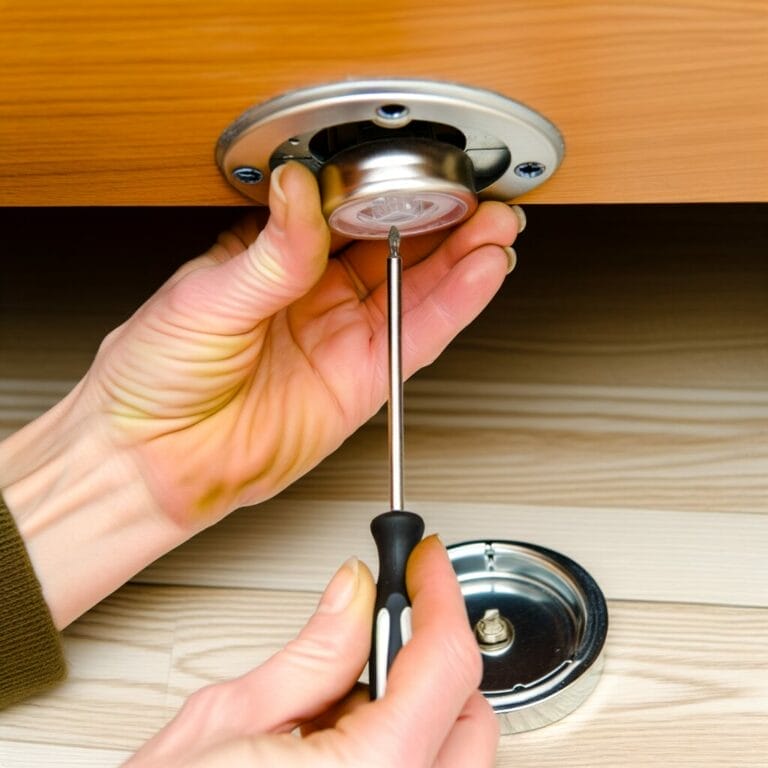How To Cut Led Light Strips: Your DIY Guide At Home
Like expert chefs preparing a gourmet meal, we’re here to guide you through the precise art of cutting RGB LED light strips and the need to connect them properly. Having mastered the technique of cutting and exposing the copper dots, the LED strip length must be precise—too long, and your accent lighting looks cluttered; too short, and the dim ambiance isn’t quite there.
In our How To Cut Led Light Strips guide, we’ll walk you through understanding the basics, preparing your workspace, and the exact steps to cut and connect your LED strips. Stick with us to illuminate your space perfectly, and discover why this skill can transform any room from ordinary to extraordinary.
Key Takeaways
- Identify and cut along designated lines on LED strips to avoid damage.
- Use connectors or soldering for secure attachment of LED strip segments.
- Make sure the installation surface for the LED tape is clean, dry, and smooth for optimal adhesion.
- Before final installation into your cabinet, test LED lights to check that the lights can be used without issues.
Understanding the Basics of LED Strip Lights

Before diving into the intricacies of cutting and installing LED light strips, let’s first understand what LED strip lights are and their myriad applications. LED flex strip lights are versatile, containing small LED modules that emit dim light. LEDs are a favorite for both home enthusiasts and professionals seeking innovative accent lighting solutions. These strips can be tailored to fit various spaces, offering a range of colors and brightness levels to suit any ambiance.
Cutting the LED strip necessitates identification of specific points, morphing our copper dots at the end into permissible cutting areas. These are typically marked on the LED tape, ensuring we don’t compromise its functionality. After cutting, attaching the strip to a power supply is the next step. This is where understanding polarity becomes vital; connecting the strip incorrectly can lead to damage or malfunction.
Using a soldering iron may be necessary to attach connectors or additional wires to the LED tape, especially if we’re customizing the setup for specific needs. Damaging the delicate components of the LED strip, especially when trying to scrape the plastic cover, requires a steady hand and a bit of know-how.
Safety can’t be overstated when working with LED strips. Always make sure the LED strip’s power supply is disconnected before starting any cutting or soldering work to prevent accidents.
Preparing to Cut LED Strip Lights

Once you’ve decided on the perfect spot for your LED light installation, it’s crucial to prepare properly for cutting the LED strip lights. This step sets the foundation for a seamless integration of innovative lighting into your space, ensuring that the final setup not only meets but exceeds your expectations. Here’s how we get ready:
- Identify the Designated Cut Lines: Installing LED strip lights come with designated cut lines, typically marked by a straight line and sometimes scissors symbols across the strip. These are the safe zones for making cuts on the LED tape, ensuring you don’t damage the internal components of the strip. It’s here you’ll focus your attention when determining where to cut along.
- Gather the Necessary Tools: Precision is key, so arm yourself with a sharp pair of scissors or a cutting tool specifically designed for LED strips. Additionally, have a tape measure or ruler on hand to ensure your cuts are exactly where they need to be. Removing the casing off the ends ensures a clean, straight edge that makes the next steps smoother.
- Measure and Mark Your Cut Points: Before making any cuts, measure the length needed carefully and mark it clearly on the LED strip. This is crucial for fitting the strip into the connector accurately. Ensure your markings align with the copper dots on the strip; these dots are where you’ll eventually connect the wires, facilitating a seamless flow of electricity throughout the installation.
Step-by-Step Guide on How to Cut LED Strip Lights

Let’s dive into the step-by-step guide on safely cutting LED strip lights, ensuring that the strips can be connected without damage, and to ensure your installation goes smoothly. Cutting LED strip lights may seem daunting, but with the right approach, it’s a straightforward task that can be done without harming the functionality of the lights.
- First, identify the cut lines along the strip. These are typically marked with scissors icons and are located at intervals where it’s safe to cut the strip. These marks indicate where the LED strip has copper pads, which are essential for making connections after the strip is cut.
- Next, take a sharp pair of scissors. Dull scissors might damage the strip or cause an uneven cut. Carefully align the scissors with the cut line you’ve chosen. This precision is crucial for ensuring that the copper pads remain fully intact and usable.
- Now, cut the strip. It’s important to make a clean, straight cut directly on the marked line. If the strip you’re installing is waterproof, be aware that the adhesive backing and waterproof coating may require a bit more force from a sharp knife or box cutter to cut through, but don’t apply so much pressure that it damages the strip.
- After cutting, you’ll see the exposed copper pads. Remember the black wire! It’s what you’ll use to connect this piece of the strip to power or another strip segment. We’re focusing on cutting the LEDs, however, we won’t dive into connections with the black wire just yet.
Connecting the Cut LED Strip Lights

Having mastered the art of cutting LED strip lights, we now turn our attention to the crucial step of connecting the cut segments. For those of us seeking innovative ways to illuminate our spaces, understanding how lights can be used in various methods to connect LED strips is key.
We’ve discovered three main approaches to ensure a seamless connection:
- Using Connectors: Ideal for those who prefer a solder-free solution. Simply align the copper dots on the cut ends of the LED strip with the connector’s pins, close the clasp, and you’ve got a secure connection. Connecting LED strip lights can be quick, easy, and requires no additional tools other than a controller on some occasions.
- Soldering: For a more permanent and reliable connection, a soldering iron and some solder can be used. This method involves:
- Tinning the copper dots on each segment with solder.
- Applying solder to the tinned areas and joining the LED tape segments together.
- Using a shrink tube over the soldered connection for insulation and protection.
- Alternative Methods: For those who either lack a soldering iron or prefer not to solder, conductive adhesive tapes or clamp connectors offer another route. These methods, such as using a controller, can be less durable but are incredibly user-friendly for beginners or quick projects.
Whether you scrape the plastic cover or use some other method, it’s paramount to ensure that the copper dots are properly aligned and secured. Each technique has its place in the world of DIY LED projects, allowing for creativity and innovation in lighting design. Whether opting for the simplicity of connectors, the durability of soldering, or the convenience of alternative methods, we’re equipped to bring our illuminated visions to life.
Installing the Cut LED Strip Lights

For a secure installation, it’s crucial to prepare the surface first. Ensure it’s clean, dry, and smooth. Any dust or moisture can potentially compromise the adhesive backing of the LED strips, and if not dealt with can lead to potential issues with the lights without proper maintenance down the line. We also recommend testing the lights before final installation to avoid any surprises.
In order to achieve a perfect application, following the manufacturer’s instructions is key, paying close attention to the type of LED used and whether your silicone-encased LED strips can be connected at the end of the strip.
Each brand may have slightly different recommendations or requirements for installation, and overlooking these details can lead to less than optimal performance or even damage to the strips. If the instructions suggest additional securing mechanisms like clips or adhesives, don’t skip these steps. They’re designed to ensure that your lights stay in place and work beautifully for a long time.
Conclusion
So, we’ve guided you through cutting LED strip lights, from understanding the basics to the final installation.
By following our step-by-step instructions, you’re now equipped to customize your LED lighting setup to fit any space perfectly.
Remember, it’s all about measuring accurately, cutting precisely, and connecting securely.
We’re confident that with this knowledge concerning LED strips and how they need to connect, you’ll not only enhance your spaces with beautiful lighting but also enjoy the process of creating something uniquely yours.
Happy lighting!
Frequently Asked Questions
Can I cut LED light strips?
Yes, LED light strips can be cut along the designated cutting points to fit your specific needs. If you’re not confident with your skills, you can always consult a professional.
What tools do I need to cut LED light strips?
You may need a sharp knife to cut the strip, soldering iron if you plan to reconnect the strip, and connectors to reattach the strip if necessary.
How do I cut and reconnect LED light strips?
To cut your LED strip lights, you can use a sharp knife to make a clean cut along the pair of copper dots, which are the designated cutting points, and then use a soldering iron to reconnect the strips. Make sure to match the polarity and use proper connectors for a secure connection.
Can I install LED light strips without the help of an electrician?
Yes, you can easily install LED light strips at home without the need for an electrician, as long as you follow safety guidelines and instructions provided with the strips.
What should I keep in mind while cutting LED light strips?
Make sure to cut along the designated cutting points and match the polarity when reconnecting the strips to avoid any damage to the circuitry.







